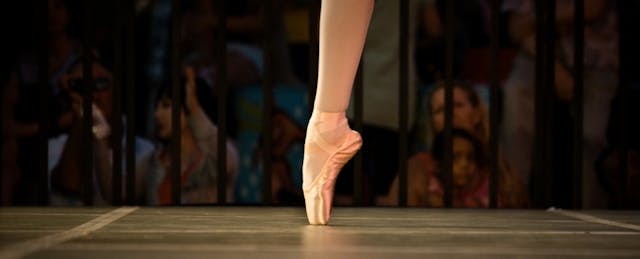In my old classroom, I always tried to differentiate as much as I could. I would often make three levels of activities covering a particular topic or make sure that I had a kinesthetic entry point to the lesson. Even still, in my old classroom there were only a few layers of material to sink your teeth into, and the results were merely OK.
But three years ago, something changed. In 2012, my school, MS88 in Brooklyn, NY partnered with New Classrooms to implement a personalized learning model for mathematics called Teach to One.
Introducing technology was like adding several more layers to the learning environment, which provided a much richer experience for my students. It allowed me to target each student with the skill they are ready for in the instructional approach best suited for their needs. Using algorithms, Teach to One: Math helps me and my colleagues personalize the learning experience for our 300 students, grouping them according to readiness every day, regardless of grade level. The result was that my students now had a constantly changing context to learn from and an increase in student ownership. These key pieces changed my practice entirely.
Changing Context Matters
The technology component of Teach to One has been dramatic for my teaching practice, but, surprisingly, the biggest impact has come from the model’s variety of instructional approaches, called modalities, which differentiate lesson styles, activities, group sizes, student groupings, room location, and even the teacher.
There are seven different learning modalities that a student could be assigned on any given day, and they vary widely from virtual instruction to teacher-led investigations to task projects to small group collaborative activities (only two involve computer-based instruction). Each modality asks the students and teachers to play different roles for purpose of creating fresh perspectives.
To put it simply, my students get a fresh look at mathematics every day. They could be assigned a small group collaborative activity one day, a multi-day group project the next, and a virtual lesson the following. Whether they had shown mastery of a skill the previous day or were attempting a second look at the same skill, the students must wrap their head around a new assignment and context every day. Using the various modalities added even more layers on top of that and literally changed the flavor of mathematics every day. In my experience, that fresh context every day not only helps develop good mathematics skill but it also helps develop other cognitive skills such as adaptability, social intelligence and self-discipline. These types of skills, while not assessed on standardized tests, have been shown to correlate to student success.
Taking The Teachers Out of The Center, And Putting The Students Into It
My team and I put a lot of emphasis on students becoming active, self-directed learners. Each day the students receive their daily assignment through a web-based portal that houses their daily schedules, assignments, homework, and grades — not from their teacher. Thus, they immediately become responsible to guide themselves to the appropriate section of the room and the correct table at the right time.
In this type of learning environment, I saw students thrive in ways I hadn’t before. They became much more independent, self-directed learners. The students managed their own schedule, time, and resources. The teachers provided a rich learning environment, and the students, independently, adapted and explored mathematical ideas from multiple perspectives.
I also watched them develop more than academic skills. I watched them change roles from virtual learner to group or peer collaborator, and all the while, they were synthesizing the same information. Not only were they learning math concepts in a variety of contexts, but they were also learning adaptability, social intelligence, group dynamics, and, perhaps most importantly, independence.
Teaching Active Learning
The data show that active learning has a much greater effect than the alternative (passive, lecture-style absorbtion). Good teachers know this. Learning by doing is much more interesting, enjoyable, and fruitful than passively receiving information. And setting up interesting modalities — contexts in which to learn — and keeping them fresh every day adds a new layer to active learning that has engaged my students in ways I did not realize were possible.
Teaching students to shift from passive to active learners took a lot work. My colleagues and I spent significant time designing activities to model and train the students in self-directed learning. That went for everything from how to access their daily schedule, modeling the teacher and student roles of seven modalities, and even simply how to handle their computers. As with any classroom, norms and procedures are crucial, but the kids have adapted seamlessly.
My teaching assignments and contexts also change every day too, and I’ve had to expand my knowledge and practice tremendously, as I have to be ready to teach anything from 4th to 10th grade to meet my students where they are on 24 hours notice. I’ve had to shift my thinking of the teacher’s role from sage on the stage to facilitator, coach, questioner, or even observer when appropriate. Every day I get a fresh perspective on teaching mathematics. And if it has deepened student knowledge as much as it’s deepened my own pedagogy, I know it’s working.


